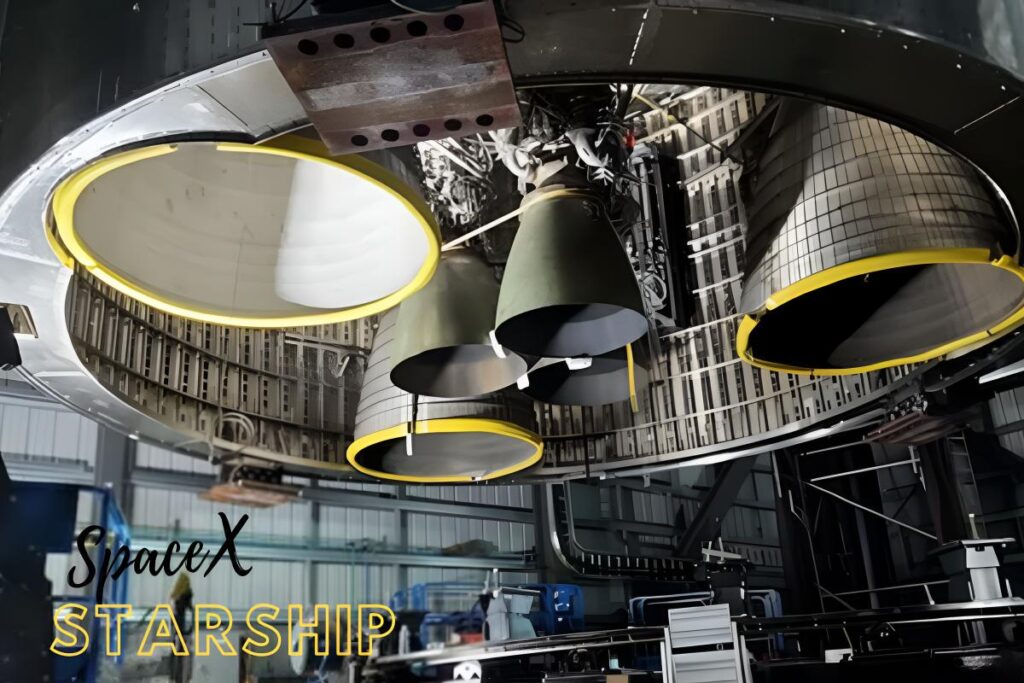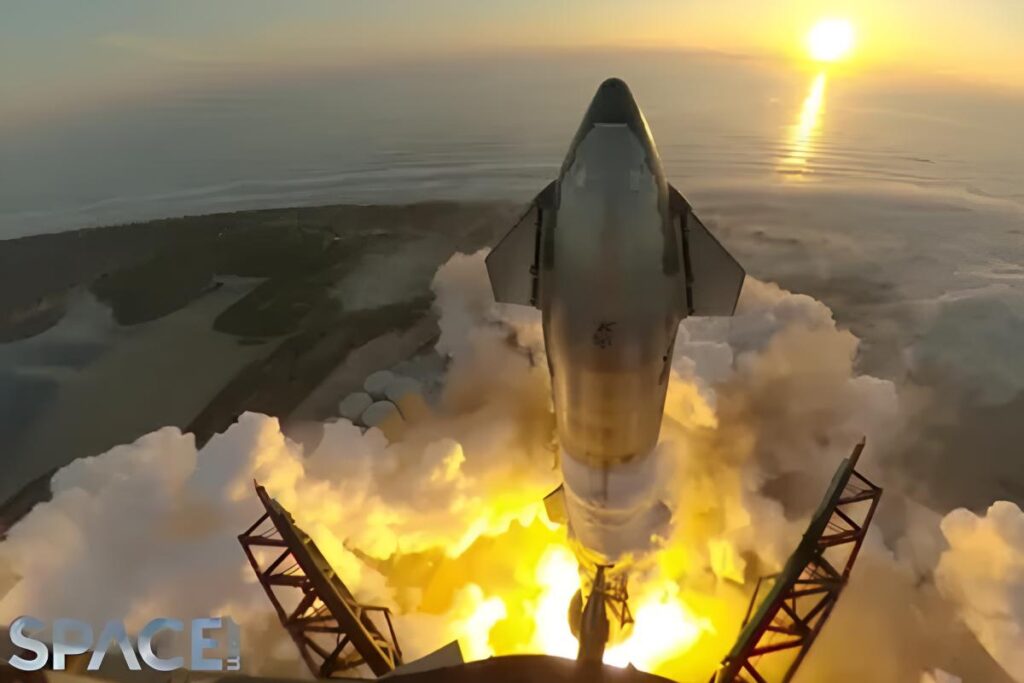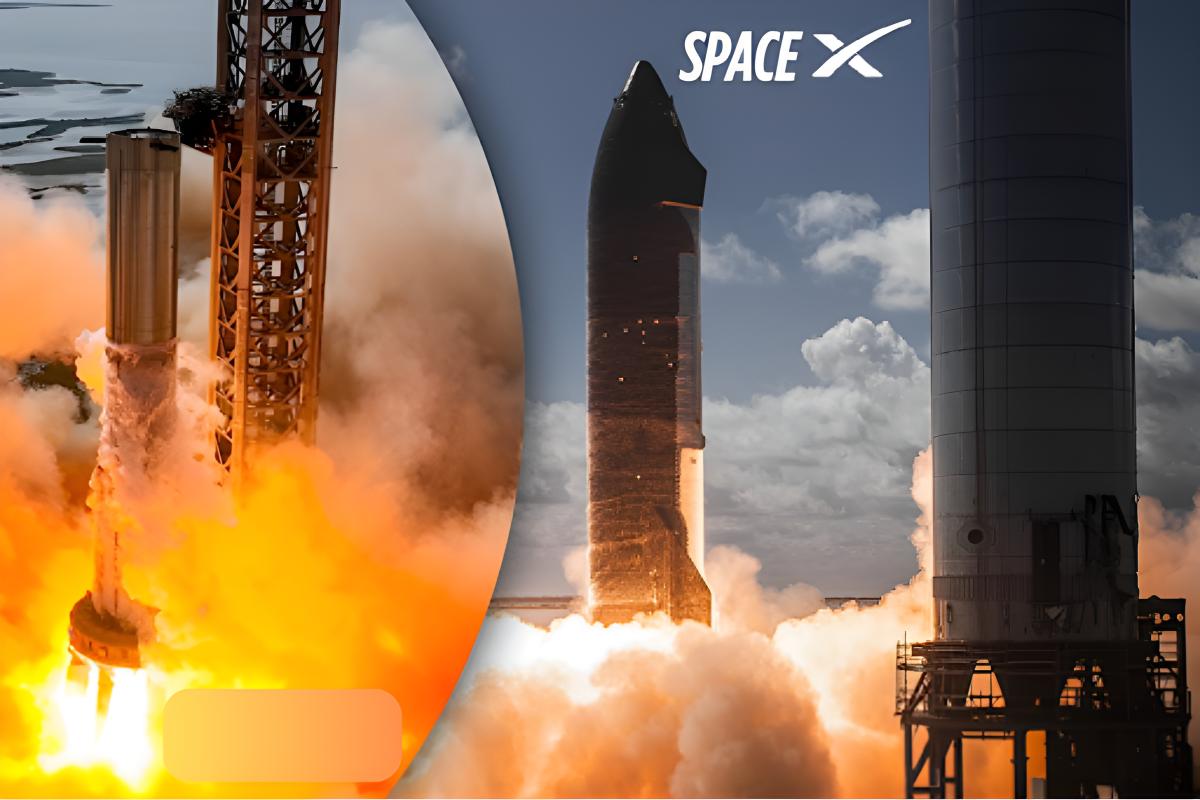Introduction to SpaceX Starship Launch
SpaceX Starship Launch is the most thrilling experience in space exploration. SpaceX, a space technology firm founded by Elon Musk, created the Starship to transport humans and payloads to the Moon, Mars, and beyond. The reusability of the heavy-lift vehicle makes space travel possible and economically viable.
SpaceX Starship Launch is a two-stage rocket, which includes the Super Heavy booster and the Starship spacecraft. The booster is the first push to escape the gravity of Earth, while Starship further propels it into space. It is the largest rocket ever constructed and can transport more than 100 tons of payload.
One of the riskiest objectives of the SpaceX Starship Launch is to make man multi-planetary. SpaceX wants to send man to Mars, establish colonies, and venture out into deep space. The rocket uses cutting-edge technology, such as stainless steel production and Raptor engines that have unimaginable power and performance.
Each SpaceX Starship Launch gets us closer to the future of space travel. With each test and mission, SpaceX gets better and wiser, and space travel is safer and more dependable. The latest SpaceX Starship Launch is closer to realizing Musk’s ambition to colonize space.
History of SpaceX Starship Launch

The SpaceX Starship Launch project started with a dream of developing a reusable rocket which would be capable of reaching deep space. SpaceX started the development of the Starship in 2016, and the initial prototypes were called Starhopper. They were used to experiment with new technology for future SpaceX Starship Launch missions at small scales.
SpaceX conducted demonstration flights at high-altitude elevations in 2020, with Starship test vehicles sighting as high as 12.5 km. Even though initial test flights were unsuccessful since the spacecraft had burst, they were helpful. A SpaceX Starship Launch was landed successfully using the SN15 test vehicle in May 2021.
SpaceX conducted the initial SpaceX Starship Launch on a completely integrated level in 2023 with the Super Heavy booster. It was a historic re-design of the rocket. With few crashups in between, with every flight, the design improved further, it became more efficient, and it got stronger.
The future of SpaceX Starship Launch is to go to Mars and beyond. NASA chose Starship for the Artemis mission, to return human beings to the Moon. With every launch, SpaceX is moving itself closer towards Elon Musk’s vision of interplanetary travel. The path of Starship is setting the course to the future of space travel.
Features of SpaceX Starship Launch
SpaceX Starship Launch is the most sophisticated space mission ever thought of. Starship, with the capability to travel very far in space, has the ability to carry human beings and goods to Mars, the Moon, and other planets. Each SpaceX Starship Launch uses the most sophisticated technology that reduces the cost of space travel and makes it more efficient.
Most Important Features of SpaceX Starship Launch:
- Full Reusability Design: SpaceX Starship Launch employs the full reusability design, hence making space travel affordable.
- Super Heavy Booster: The heavy booster supplies the energy needed to launch Starship into orbit. It is equipped with advanced Raptor engines.
- High Payload Capacity: Starship has a payload capacity of more than 100 tons, hence perfect to carry equipment and humans.
- Heat-Resistant Stainless Steel: The spacecraft is constructed from stainless steel to shield it from space temperatures.
- High-Thrust and High-Efficiency Raptor Engines: The SpaceX Starship Launch is fueled by Raptor engines, high thrust and high efficiency, which are most appropriate for space travel in deep space.
Every SpaceX Starship Launch includes something new being incorporated into the spacecraft that is making it stronger and more reliable. SpaceX Starship Launch is space development that is leading humankind one step closer to the day when human beings will be capable of settling on another planet.
Latest News on SpaceX Starship Launch

The SpaceX Starship Launch program has achieved unprecedented success in recent history. In March 2025, the eighth test flight witnessed the Starship rocket exploding a few seconds after taking off. Despite this failure, Elon Musk described it as a “minor setback,” highlighting learning from every test towards future launches.
In the year 2025, the ninth launch of the SpaceX Starship will occur on April 20, 2025. The subsequent test will be better from previous faults and will teach the rocket what it is capable of.
In legislative news, a Texas Legislature bill would provide SpaceX with more control over South Texas beach closures to launch rockets. Things would proceed more smoothly at the Boca Chica plant but were questioned locally in terms of public use and environmental concerns.
Elon Musk remains committed to his vision of establishing life as multi-planetary. He anticipates the initial landing on Mars for human beings by 2029, with an ambition to achieve a sustainable colony of one million people within two decades.
Each SpaceX Starship Launch is leading the company more in the direction of revolutionizing space travel, with the ultimate goal of achieving human life on other planets.
SpaceX Starship Rocket Launch
SpaceX Starship Launch is a groundbreaking event in space exploration. The gigantic rocket developed by SpaceX will transport humans and cargo to other planets. SpaceX Starship Launch is a two-stage rocket that comprises the Super Heavy booster and the Starship spacecraft. Combined, they are the world’s largest rocket.
Each SpaceX Starship Launch is designed to upgrade the rocket. The rocket itself is constructed with stainless steel, which is both strong and can be reused. It is driven by Raptor engines, fueled by oxygen and liquid methane. This is a fuel that allows for easier mission trips to Mars in the future because methane can be produced on Mars.
The objective of all SpaceX Starship Launches is to test new technology. SpaceX will travel to the moon and Mars with Starship. Starship can hold more than 100 tons of cargo, which is more suitable for travel in space. NASA has already planned to use Starship for travel to the moon in the near future.
With every SpaceX Starship Launch, researchers get to learn more about how they can enhance the rocket before it is complete. SpaceX is trying to make Starship a main aspect of space travel in the future. This rocket might be the first to take humans to Mars and make deep space travel possible.
SpaceX Starship Flight 7
SpaceX launched its seventh Starship test flight, SpaceX Starship Flight 7, on January 16, 2025. It was from Starbase at Texas Orbital Launch Pad A at 4:37 p.m. CST. The flight included Booster 14, a Block 1 Super Heavy booster, and Ship 33, the initial Block 2 upper stage, with mind-boggling differences in structure and avionics.
As it ascended, all 33 Super Heavy booster Raptor engines worked as designed, stage separation successful. The booster executed its boost-back burn, 12 of the scheduled 13 Raptor engines firing again to start descending back to the launchpad.
But after eight and a half minutes in flight, fire broke out in the rear of the Starship upper stage that led to loss of communication followed by vehicle loss over the Atlantic Ocean. Debris extended along the Turks and Caicos Islands. The inquiry found that harmonic vibrations unexpectedly occurred, which caused propellant leaks, producing recurring fires that compromised the integrity of the vehicle.
Following the failure, SpaceX also made hardware modifications, such as new vents and a gaseous nitrogen purge system, to ensure that future dangers are prevented. Although partial success initially and subsequent failure, SpaceX is working on further developing the Starship program, knowing that every test is a wonderful learning experience in a bid to provide secure and repeatable space flight.
Spacex Starship launch date
SpaceX Starship launch is likely the most highly anticipated in space exploration. SpaceX retains technological supremacy as it hurries to create Starship as the most reusable and capable rocket ever constructed. The SpaceX Starship launch schedule relies on a number of variables such as test development, regulatory concerns, and weather.
SpaceX is gearing up for the next SpaceX Starship launch, set to take place in mid-2025. Engineers are updating the rocket frame, engines, and heat shield to make the mission a success. Each test gives useful data that will make flights better in the future. The dream is to have Starship carry people and cargo to the Moon, Mars, and beyond.
Past efforts at lifting off by the SpaceX Starship have proved monumental improvements, even where there was a setback. Each flight is inching the company closer to the all-reusable spacecraft. As it continues testing and making improvements to its configuration, the next SpaceX Starship launch will demonstrate further improvements.
Space fans around the globe are holding their breaths for the next achievement. As the launch date of SpaceX Starship approaches, SpaceX will inform us about their mission, leading humankind closer to interplanetary exploration.
SpaceX Starship Flight 7 Launch
SpaceX launched its seventh Starship test flight launch vehicle, SpaceX Starship Flight 7, on January 16, 2025. It was from Orbital Launch Pad A at the Texas Starbase facility at 4:37 p.m. CST. The test was with Booster 14, a Block 1 Super Heavy booster, and Ship 33, the first Block 2 upper stage, with major structure and avionics upgrades.
At climb, all 33 Super Heavy booster Raptor engines operated nominally with normal stage separation. The booster finished its boost-back burn and had 12 of the 13 anticipated-on Raptor engines firing to start its return flight to the launch pad. But approximately eight and a half minutes into flight, a fire occurred in the back of the upper stage of the Starship that caused loss of contact and resultant vehicle loss over the Atlantic Ocean. Debris was scattered throughout the Turks and Caicos Islands.
Tests had validated that harmonic vibrations from unknown origins were causing propellant leaks, resulting in long-duration fires that compromised vehicle structure. SpaceX countered with hardware redesigns, such as additional vents and a gaseous nitrogen purging system, aimed at avoiding subsequent accidents. Partly successful at first and then failing, SpaceX will persist with the Starship program, seeing every test as a learning opportunity in creating safe and reusable space transportation.
Most Frequently Asked Questions
One of the most anticipated space missions, SpaceX Starship launch was the favorite of everybody with numerous questions. Below are some of the most frequently asked questions:
1. Why is SpaceX launching Starship?
SpaceX Starship launch will establish a fully reusable spacecraft for deep space travel. It will take humans and cargo to the Moon, Mars, and other destinations.
2. How large is the Starship rocket?
The Starship is 123 meters (403 feet) in height, the largest and strongest rocket ever made. It is made up of two components: the Super Heavy booster and the Starship spacecraft.
3. Was the SpaceX Starship launch a success?
There have been some test flights, but there were others that didn’t function. SpaceX continues to learn from every failure so that subsequent launches get better.
4. When is the next SpaceX Starship launch?
SpaceX continues to revise plans for launch. The next test will depend on regulatory approval and technical progress.
5. What is Starship’s long-term vision?
The SpaceX Starship launch is a leap of giants in making space travel affordable and human Mars settlement a possibility.
According to BBC News
A Thursday launch of a SpaceX Starship failed when the gigantic rocket exploded minutes after lifting off from Texas. The unmanned vehicle had a “rapid unscheduled disassembly” as it ascended, disintegrating with the ground, SpaceX stated.
SpaceX Starship test flight was to perform a one-hour mission and then return to Earth’s orbit above the Indian Ocean. But the 123-meter (403-foot) rocket went out of control and disintegrated, with debris scattered over the Caribbean Sea. Nobody was injured, but flights in Florida, including those that operate in Miami and Orlando, were briefly grounded by safety issues.
SpaceX reported the Super Heavy booster did make it back to the launchpad intact but suffered a multi engine failure that led to the explosion. The company is analyzing data on what happened and will improve flights to make them safer in the future. This is the second Starship failure after an identical failure in January to cause damage to property in the Caribbean.
In spite of the setbacks, SpaceX is working towards making SpaceX Starship launch reusable in its entirety for missions to Mars and the Moon. NASA intends to use a variant of Starship for its lunar missions under the Artemis program, whereas Elon Musk considers it a first-generation mainline spacecraft for interplanetary space travel.


